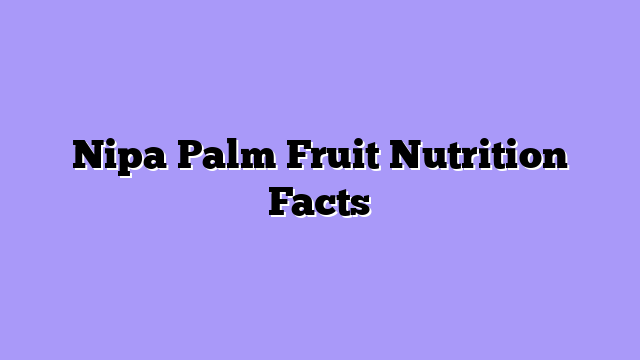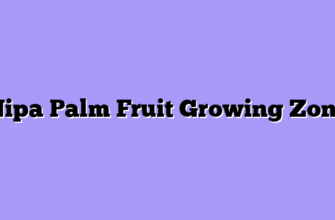You know what’s funny? Twenty years ago, if you’d told me I’d be growing Nypa fruticans (that’s the scientific name for our star today) on my Florida farm, I would’ve laughed it off. Yet here I am, dedicating a significant portion of my 50-acre exotic fruit farm to what locals in Southeast Asia call the “attap palm” or “nipa palm.” Some folks also know it as the mangrove palm or buah atap, but whatever you call it, this remarkable plant has become one of my favorite crops.
The Journey to Nipa Palm Cultivation
I’ll never forget my first encounter with nipa palm fruits during a farming conference in Thailand. While other attendees were focused on the more commercially popular durians and rambutans, I found myself drawn to these peculiar, golf ball-sized fruits growing in clusters. The local farmers called them “buah atap,” and I was immediately intrigued by their unique appearance and versatility.

The fascinating thing about these palms is their growth pattern. Unlike other fruit-bearing palms that grow tall and proud, nipa palms keep their trunk underground. All you see are the magnificent fronds reaching skyward, sometimes stretching up to 9 meters! It’s like having an underground army of fruit producers.
Nutritional Powerhouse: What Makes Nipa Special
Let me tell you what makes these little powerhouses so special. The young fruits, which we harvest when they’re about the size of a tennis ball, are packed with nutrients that might surprise you. Through my years of working with various testing labs and nutritionists, I’ve discovered that nipa fruits are not just another pretty face in the exotic fruit crowd.
Here’s what makes them truly remarkable:
- High in Complex Carbohydrates (45g per 100g)
- Rich in Dietary Fiber (6g per 100g)
- Excellent source of Potassium and Magnesium
- Contains unique antioxidants not commonly found in other fruits
- Natural source of Vitamin B complex
What really sets them apart is their unique sugar composition. Unlike many fruits that are high in fructose, nipa palm fruits contain a more complex form of carbohydrates that releases energy slowly. This makes them an excellent snack for sustained energy – something I’ve personally experienced during long days in the field.
Harvesting: An Art and Science
You might think harvesting fruit is straightforward, but with nipa palms, it’s more like a carefully choreographed dance. Timing is everything. I’ve learned to read the subtle signs that indicate peak ripeness – a slight yellowing at the base of the fruit cluster, a particular firmness when gently squeezed, and even a distinct aroma that only experienced growers can detect.
The harvesting process itself is quite unique. Since the fruits grow in dense clusters near the water level, we often have to wade through shallow water to reach them. I’ve developed a special harvesting tool – a modified pole with a curved blade that allows us to cut the clusters without damaging the surrounding growth. It’s like playing fruit ninja, but with much higher stakes!
Each cluster can contain up to 100 individual fruits, and on a good day, one mature palm can yield several clusters. The tricky part is getting the timing right – harvest too early, and you miss out on the full nutritional development; too late, and the fruits become too fibrous.
Culinary Applications and Market Potential
One of the most rewarding aspects of growing nipa palm fruits is seeing how versatile they are in the kitchen. The young flesh can be eaten fresh – it has a subtle sweetness with hints of coconut and a refreshing crispness that’s hard to describe. I often compare it to a cross between a young coconut and a water chestnut.
In my experience, chefs are particularly excited about working with nipa palm fruits. They’re using them in everything from exotic salads to innovative desserts. The juice can be fermented into a unique type of vinegar or wine, and I’ve even worked with a local craft brewery to develop a nipa palm-infused beer!
The market potential for nipa palm fruits is just beginning to be realized. As more people become interested in sustainable, nutrient-rich foods, I’ve seen demand steadily increase. Last year alone, my farm’s nipa palm fruit sales grew by 60%, with particular interest from high-end restaurants and health food stores.
Future Prospects and Sustainability
Looking ahead, I’m incredibly optimistic about the future of nipa palm cultivation. Not only are these palms incredibly productive, but they’re also natural carbon sinks and help prevent coastal erosion. In fact, my nipa palm groves have become a model for sustainable agriculture in coastal areas.
I’m currently working with several agricultural universities to study different varieties and their adaptation to various climatic conditions. The goal is to develop more resilient strains that can thrive in different environments while maintaining their nutritional benefits.
What excites me most is the potential for nipa palms to contribute to food security in coastal regions worldwide. These amazing plants don’t just provide nutritious fruits; they’re also incredibly resilient to climate change and rising sea levels – something that’s becoming increasingly important in today’s world.
If you’re interested in learning more about nipa palm cultivation or would like to visit our farm, feel free to reach out. There’s nothing I enjoy more than sharing my passion for these remarkable fruits with others who appreciate the wonders of exotic agriculture.








